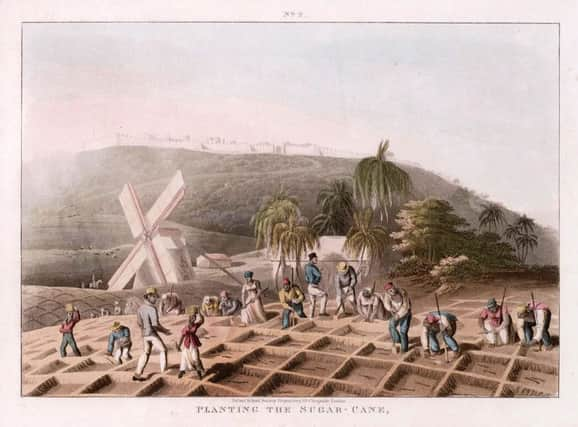Slave owner died in Leamington


Alan Griffin, of Leamington History Group, has researched the life of Elizabeth (Eliza) Scarlett who died in 1821, aged 53, and was buried in the churchyard.
She was the wife of James Scarlett who owned a sugar plantation in Jamaica. He died in 1798 leaving behind huge debts. Eliza moved back to England from Jamaica with her two small children but continued to manage the Scarlett estates from England for the next 23 years.
Advertisement
Hide AdAdvertisement
Hide AdDuring his research Alan travelled to the Hull Record Centre where he found 193 items about the Scarlett estates. He has produced a slideshow on the Leamington History Group website entitled ‘Eliza Scarlett, Leamington widow and Jamaican slave owner’.


He said: “This is a story that I uncovered about local associations with the slave trade. Eliza was a young woman of just 30 when her husband died. It says much about the capable woman she was that she successfully managed the estates from England in very difficult times for all those producing sugar.
“We know that she came back to England in 1800 and that she went back to the family’s Greenfield Estate in Jamaica in 1810 and again between 1815 and 1817. She would have had to address the problems of the Abolition Act in 1807 but had died by the time compensation was paid in 1833.”
Alan has researched the use of slaves on the sugar plantations. He said: “There is no doubt the slaves were harassed and subjected to mental and physical abuse. The average survival time on the plantations was just nine years.”
Advertisement
Hide AdAdvertisement
Hide AdAs part of his research Alan has bought a pair of manillas, brass bracelets which were used as currency to buy slaves from traders in Africa. Manillas were mainly manufactured in Birmingham.
In his postcript to the slideshow Alan said: “Eliza sat down at her desk in Leamington to write out her will on Boxing Day 1820 and had died before the week was out. In spite of much that I read and saw, I developed a huge amount of empathy for Elizabeth Scarlett, a truly remarkable Regency woman.”
To see the slideshow visit: www.leamingtonhistory.co.uk
Pictured: Slaves planting sugar cane in Jamaica and Alan Griffin with the two manillas he bought.